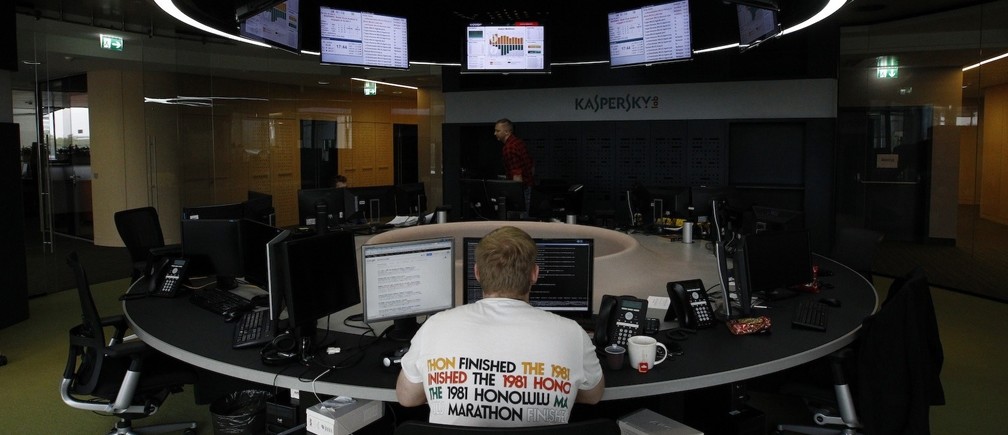Russia on the ‘Cyber Silk Road’
Digital-Russia |
 "The digital dimension of Eurasian connectivity has yet to be addressed" - Image: REUTERS/Sergei Karpukhin
"The digital dimension of Eurasian connectivity has yet to be addressed" - Image: REUTERS/Sergei Karpukhin
By Parag Khanna
The announcement of the $100 billion Asian Infrastructure and Investment Bank (AIIB) was one of the biggest geopolitical stories of 2015. I believe that its mission to advance “One Belt, One Road” from Shanghai to Lisbon will also be one of the biggest stories of 2020, 2025 and 2030.
Eurasia’s geopolitical integration is becoming the “going concern” predicted by legendary British scholar Halford Mackinder over a century ago. What will this panoply of new Silk Road initiatives mean for Russia - the crucial territorial bridge in the plans? And what are the digital dimensions that have yet to be considered?
Already the range of institutions contributing to Eurasia’s infrastructural integration extends beyond the AIIB to include the BRICS Bank, Silk Road Fund, Shanghai Cooperation Organization (SCO), Asian Development Bank (ADB), International Finance Corporation (IFC), and numerous other bilateral and multilateral entities. Through its aid programs and foreign investment, the EU has been the largest contributor to infrastructure modernization in Russia, Eastern Europe, and the Caucasus region through programs such as TRACECA. Each of these funds and pools of capital will finance and supervise projects across multiple corridors from the Arctic to South and Central Asia. But no corridor is as significant - or could progress as quickly - as across Russia.
Russia must maximize its positioning and role as a conduit for these new Silk Road layers of energy and transportation infrastructure, leveraging funds to accelerate the modernization of its railways, roads, bridges, oil and gas pipelines, irrigation and other foundations of the state. The opportunities to upgrade second-tier cities in southern Russia, Siberia and the Far East, promote Russia as a speedy pathway for Euro-Asian good trade, and prepare for the expansion of traditional but increasingly lucrative industries such as agriculture are all enormous.
Russia can also take the lead in promoting the cyber-Silk Roads. Indeed, the digital dimension of Eurasian connectivity has yet to be addressed by the AIIB or other regional bodies, yet represents a similarly significant market for trans-continental infrastructure and services such as long-range Internet trunk cables and data centers. Software companies offering supply chain optimization, and ISPs and telecoms delivering higher bandwidth, all stand to benefit from greater commercial connectivity. If data is the new oil, where is Russia’s equivalent of Transneft offering multiple and secure digital connections to cater to growing East-West data exchange?
This would, of course, be quite a shift from current perceptions of Russia’s cyber-strategy. The 2007 cyber-strikes against Estonia, the role of Russian hackers in the theft of Fortune 500 corporate data, and more recent suspicions that Russian submarines are hacking into undersea Internet cables are just some of the episodes that have the international community concerned about Russia’s intentions for cyber-space.
But given the high-risk nature of cross-border infrastructure project finance, Russia has the opportunity to play a vital role as the stable guarantor of physical and digital transit, both for its own benefit and that of the world’s most populous continent. Opening borders to hardware and software goods of higher standards has been demonstrated to raise both productivity and GDP. Russian businesses have themselves suffered from recent sanctions imposed on the country—a reminder that Russian should strive to capitalize on access to technologies and markets rather than being closed off from them.
It is in the nature of this year’s Davos theme of the “Fourth Industrial Revolution” that the digital augments the physical - and this applies not just to manufacturing processes but also to our global infrastructural connectivity. The unfolding “One Belt One Road” is in fact just one of the many global Silk Roads under development, all of which represent a reorganization of the planet towards a world governed by connectivity and supply chain linkages among leading urban centers.
This is the central thesis of my new book Connectography: Mapping the Future of Global Civilization. As the largest country in the world connecting the planet’s two largest economic zones, Russia should endeavor to make itself a relevant connector in every possible way in the 21st century.
This blog is part of a series written by the Global Agenda Council on Russia on ‘Digital Russia’
Author: Parag Khanna is a Senior Research Fellow at the Centre on Asia and Globalization at the National University of Singapore. His new book isCONNECTOGRAPHY: Mapping the Future of Global Civilization (Penguin Random House, 2016). He is a Young Global Leader of the World Economic Forum and is participating in the World Economic Forum’s Annual Meeting in Davos.